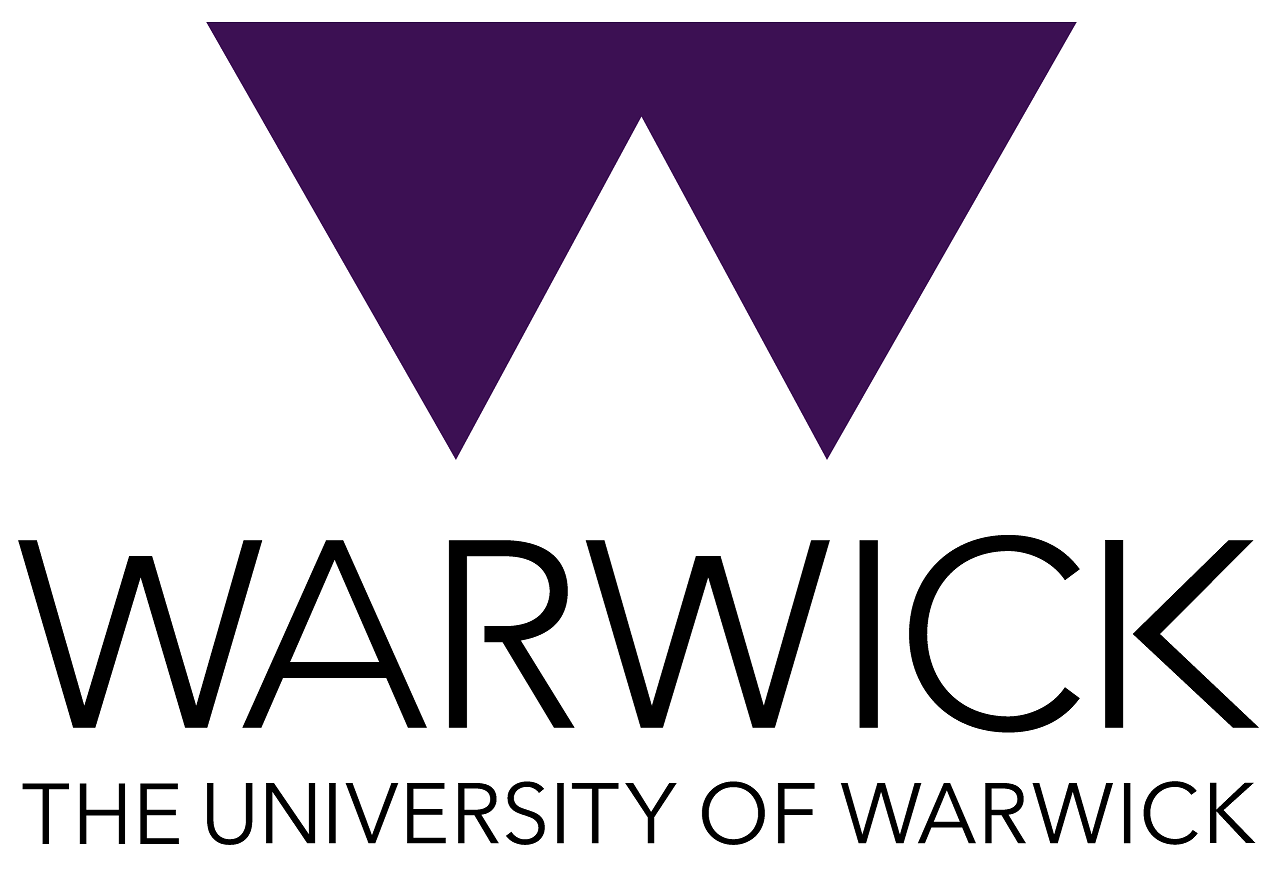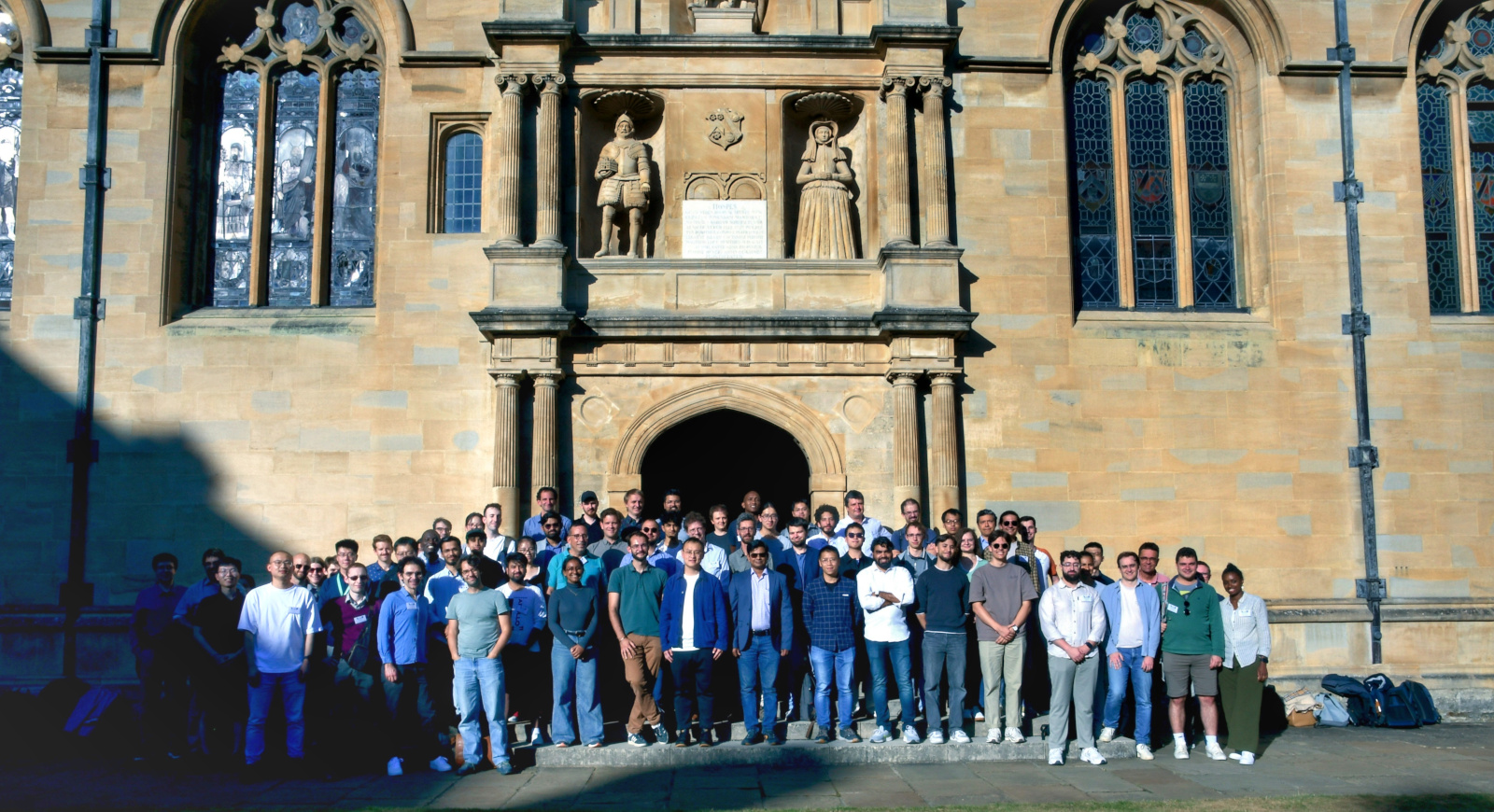Basilisk (Gerris) Users' Meeting 2025
Sponsors

|

|

|

|

|
Summary
The meeting was held on the 7–9th July 2025 at the University of Oxford, United Kingdom, in the Department of Engineering Science.
The format was similar to earlier Basilisk/Gerris meetings held in Paris, France in 2011, Wellington, New Zealand in 2012, Sevilla, Spain in 2014, Princeton, USA in 2017, Paris, France in 2019 and Paris, France in 2023. Participants were encouraged to share their work using Basilisk (or Gerris) for applications in fluid mechanics, environmental science, engineering etc. Students were especially welcome to participate in this informal and friendly gathering.
Program and presentations
| Monday 7th July | |
| 12:00 |
|
| 13:45 |
Welcome. Wouter Mostert, Radu Cimpeanu and Stéphane Popinet
|
| 14:00 |
Stéphane Popinet, ∂’Alembert, Sorbonne & CNRS, Paris, France What’s new and future plans |
| 14:20 |
Jacob Maarek, ∂’Alembert, Sorbonne & CNRS, Paris, France Towards Modeling Non-Isothermal Sloshing of Liquid Hydrogen |
| 14:40 |
Pierre-Antoine Maës, Institute for Combustion Technology, Aachen, Germany |
| 15:00 |
Yuanpeng Zhang, Department of Modern Mechanics, University of Science and Technology of China Simulation of melting/icing problems with the phase-field method |
| 15:20 |
Wei Qin, ∂’Alembert, Sorbonne, Paris, France Fluid dynamics of hydrogen production by electrolysis* |
| 15:40 |
Vatsal Sanjay, Physics of Fluids, Univ. Twente Can polymeric flows be the ‘Drosophila’ of continuum mechanics? |
| 16:00 |
|
| 16:20 |
Marc Cordelle Vacher, LadHyX, CNRS & Ecole Polytechnique, Palaiseau, France Jet impinging on a free-surface : jet flutter and self-induced sloshing |
| 16:40 |
Miguel A. Quetzeri-Santiago, Instituto de Investigaciones en Materiales, UNAM, Mexico Numerical investigation of jet impact cavity dynamics using Basilisk |
| 17:00 |
Ayush Dixit, Physics of Fluids, Univ. Twente Holey Sheets |
| 17:20 |
Francesco Picella, ∂’Alembert, Sorbonne & CNRS, Paris, France Modelling microswimmer instabilities with embed |
| 17:40 |
Riccardo Caraccio, Politecnico di Milano, Italy A One-Grid Framework for Pyrolysis of Porous Biomass Particles |
| Tuesday 8th July | |
| 8:30 |
|
| 9:00 |
Canwei Jin, Imperial College London, UK Coupled 2-D HOS-Basilisk simulations of multiple breaking waves in dispersively-focused wave groups |
| 9:20 |
Jiarong Wu, Courant Institute of Mathematical Sciences, New York University Sensitivity of upper ocean state to air-sea fluxes, tested with Basilisk’s GOTM implementation |
| 09:40 |
|
| 10:20 |
Lars Willas Dreyer, Department of Mathematics, University of Oslo, Oslo, Norway What goes in the water? Combining circulation models and sensor data |
| 10:40 |
Palas Kumar Farsoiya, Indian Institute of Technology (IIT), Roorkee, India Surfactant transport at high Peclet numbers |
| 11:00 |
Nicolo Scapin, Princeton University, USA Progress in wind-forced breaking waves |
| 11:20 |
Mathilde Tavares, ∂’Alembert, Sorbonne Université, Paris, France Waves impulsed by a granular collapse |
| 11:40 |
Bruno Deremble, Université Grenoble Alpes, France The Gulf Stream and North Atlantic circulation in a changing climate |
| 12:00 – 13:40 |
|
| 13:40 |
Øystein Lande, Ocean Oasis AS & Department of Mathematics, University of Oslo, Oslo, Norway Validation work on wave breaking with the multilayer wave model |
| 14:00 |
Andriarimina Daniel Rakotonirina, The Ocean Cleanup, The Netherlands Basilisk and Plastic Marine Debris Tracking |
| 14:20 |
Jean Robin, ∂’Alembert, Sorbonne, ArcelorMittal, France Melting of a porous iron particle in slag |
| 14:40 |
Panel discussion (1h, industry representatives, Q&A)
|
| 15:40 |
|
| 16:00 |
Daniel Fuster, ∂’Alembert, Sorbonne & CNRS, Paris, France Regularization errors in the one-fluid formulation |
| 16:20 |
Mustapha Aknine, ∂’Alembert, Sorbonne & CNRS, Paris, France Study of the effect of Regularization Errors on the developpement of Multiphase Fluid Instabilities |
| 16:40 |
Edoardo Cipriano, Politecnico di Milano, Italy Current state of gas-liquid phase change modeling in Basilisk |
| 17:00 |
Antoine Aubert, LadHyX, Palaiseau, France Implementation of a k-\epsilon RANS turbulence model in Basilisk |
| 17:20 |
Victor Boniou, IFP-Energies Nouvelles, Rueil-Malmaison, France Coalescence rate of finite-size monodisperse droplets in homogeneous isotropic turbulence |
| 18:45 |
|
| Wednesday 9th July | |
| 8:30 |
|
| 9:00 |
Aman Bhargava, Physics of Fluids, Univ. Twente Dancing droplets: the physics of post-impact retraction dynamics |
| 9:20 |
Datong Wang, LadHyX, Ecole Polytechnique, Palaiseau, France Numerical study of drop impact on concave surface: spread, jet, and splash |
| 9:40 |
Kaitao Tang, Department of Engineering Science, University of Oxford, UK. Inertial fragmentation processes associated with oceanic breaking |
| 10:00 |
Ilies Haouche, Institut d’Electronique de Microélectronique et de Nanotechnologie, University of Lille, France Numerical method to simulate soluble surfactant at high Péclet numbers in Basilisk |
| 10:20 |
|
| 10:40 |
Paul-Peter Naanouh, ∂’Alembert, Sorbonne, IFP-Energies Nouvelles, France Modelling (Not so) Thin Films with the Multilayer Solver |
| 11:00 |
Yifan Han, Institute of Fluid Dynamics, Helmholtz-Zentrum Dresden-Rossendorf, German Wetting effects on the dynamics of droplets and bubbles at surfaces |
| 11:20 |
Ben Fudge, Department of Engineering Science, University of Oxford, UK The interface dynamics of drops impacting onto a different liquid |
| 11:40 |
Nicolas Cailler, D’Alembert, Sorbonne & CNRS, Paris, France Viscosity as a regularization mechanism for conical cavity collapse like bursting bubbles |
| 12:00 |
|
| 14:00 – 17:00 |
Free time for discussions
|
Participants
- Wouter Mostert, Department of Engineering Science, University of Oxford, UK.
- Radu Cimpeanu, Mathematics Institute, University of Warwick, UK.
- Stéphane Popinet, ∂’Alembert, Sorbonne & CNRS, Paris, France
- Nausheen Basha, Imperial College London.
- Vatsal Sanjay, Physics of Fluids, Univ. Twente
- Riccardo Caraccio, Politecnico di Milano, IT
- Kaitao Tang, Department of Engineering Science, University of Oxford, UK.
- Nicolo Scapin, Princeton University, US
- Ayush Dixit, Physics of Fluids, Univ. Twente
- Aman Bhargava, Physics of Fluids, Univ. Twente
- Thomas Abadie, University of Birmingham, UK
- Palas Kumar Farsoiya, Department of Chemical Engineering, Indian Institute of Technology (IIT), Roorkee, India.
- Yuanpeng Zhang, Department of Modern Mechanics, University of Science and Technology of China
- Pierre-Antoine Maës, Institute for Combustion Technology, Aachen, Germany
- Jnandeep Talukdar, Physics of Fluids, Univ. Twente
- Mosayeb Shams, Imperial College London, UK
- Debashis Panda, Department of Chemical Engineering, Imperial College London
- Abdullah M. Abdal, Department of Chemical Engineering, Imperial College London
- Tom Sykes, School of Engineering, University of Warwick
- Antoine Aubert, LadHyX, Palaiseau, France
- Canwei Jin, Imperial College London, UK
- Jieyun Pan, Sorbonne & CNRS, Paris, France
- Jie Li, University of Cambridge, UK
- Ziyao Zhang, Department of Engineering Science, University of Oxford, UK.
- Paul-Peter Naanouh, ∂’Alembert, Sorbonne, IFP-Energies Nouvelles, France
- Jean Robin, ∂’Alembert, Sorbonne, ArcelorMittal, France
- Wei Qin ∂’Alembert, Sorbonne, Paris, France
- Tianyang Han, Sorbonne University, Paris, France
- Daniel Fuster, ∂’Alembert, Sorbonne & CNRS, Paris, France
- J.M. Lopez-Herrera, Dept. Ing. Aeroespacial y Mec. de Fluidos, ETSI, U. de Sevilla, Sevilla, España.
- M. A. Herrada, Dept. Ing. Aeroespacial y Mec. de Fluidos, ETSI, U. de Sevilla, Sevilla, España.
- Mina Jafari ∂’Alembert CNRS Sorbonne Université
- Pierre-Yves Lagrée ∂’Alembert CNRS Sorbonne Université
- Antoine Hajczak ∂’Alembert CNRS Sorbonne Université
- Jacob Maarek ∂’Alembert CNRS Sorbonne Université
- Mathilde Tavares ∂’Alembert Sorbonne Université
- Pavan Kumar Kirar, ∂’Alembert CNRS Sorbonne Université, Paris, France
- Theo Witkamp, Fluids & Flows, Eindhoven University of Technology, Netherlands
- Bruno Deremble, Université Grenoble Alpes
- Ilies Haouche, Institut d’Electronique de Microélectronique et de Nanotechnologie, University of Lille, France
- Hiroya Watanabe, Tokyo University of Agriculture and Technology, Japan
- Mustapha Aknine, ∂’Alembert, Sorbonne & CNRS, Paris, France
- Eswara Arun Kishore, Marine Engineering, Indian Maritime University, Kolkata, India
- Lars Willas Dreyer, Department of Mathematics, University of Oslo, Oslo, Norway
- Jiarong Wu, Courant Institute of Mathematical Sciences, New York University
- Øystein Lande, Ocean Oasis AS & Department of Mathematics, University of Oslo, Oslo, Norway
- Victor Boniou, IFP-Energies Nouvelles, Rueil-Malmaison, France
- Marc Cordelle Vacher, LadHyX, CNRS & Ecole Polytechnique, Palaiseau, France
- Alfonso Castrejon-Pita, Department of Engineering Science, University of Oxford, UK.
- Ben Fudge, Department of Engineering Science, University of Oxford, UK.
- Sherry Majidi, The Royal Grammar School High Wycombe, UK.
- Tharul Wanni Arachchige, The Royal Grammar School High Wycombe, UK.
- Divya Shah, The Royal Grammar School High Wycombe, UK.
- Marcus Logothetis, The Royal Grammar School High Wycombe, UK.
- Ishar Toor, The Royal Grammar School High Wycombe, UK.
- Jens Eggers, School of Mathematics, University of Bristol, UK.
- Arnaud Antkowiak ∂’Alembert CNRS/Sorbonne Université
- James Sprittles, Mathematics Institute, University of Warwick, UK.
- Andriarimina Daniel Rakotonirina, The Ocean Cleanup, The Netherlands
- Miguel A. Quetzeri-Santiago, Instituto de Investigaciones en Materiales, UNAM, Mexico
- Fanshuo MA, ∂’Alembert CNRS Sorbonne Université
- Ian Roberts, Aerotex UK
- Sai Raja Gopal Vadlamudi, Institute of Fluid Dynamics, Helmholtz-Zentrum Dresden-Rossendorf, Germany.
- Datong Wang, LadHyX, Ecole Polytechnique, Palaiseau, France
- Yifan Han, Institute of Fluid Dynamics, Helmholtz-Zentrum Dresden-Rossendorf, Germany
- Minerva Schuler, Department of Engineering, University of Warwick, UK.
- Muwanguzi Stephen Kyazze, College of Ocean and Civil Engineering, Shanghai Jiaotong University
- Ahmed Basil KOTTILINGAL, Paris
- Sebastian Dooley, Department of Engineering, University of Warwick, UK.
- Francesco Picella, ∂’Alembert, Sorbonne & CNRS, Paris, France
- Fei He Department of Engineering and Science, University of Oxford, UK
- Peter Lewin-Jones, Mathematics Institute, University of Warwick, UK
- Aston Over, Royal Grammar School High Wycombe, UK
- Anurag Muthyala, The Royal Grammar School High Wycombe, UK
- Edoardo Cipriano, Politecnico di Milano, IT
- Tianning Tang, Department of Mechanical and Aerospace Engineering, University of Manchester
- Xiaosheng Chen, Department of Engineering Science, University of Oxford, UK.
- Zheni Fei, Department of Engineerinng Science, University of Oxford,UK
- Xinyu Liu, Department of Engineering Science, University of Oxford, UK
- Nguyen Quang Chien, University of Edinburgh, Scotland.
- Jiayu Li, School of Engineering and Materials Science, Queen Mary University of London, UK
- Shiqi (Shawn) Qu, The Royal Grammar School High Wycombe, UK
- Om Mahesh Kumar Prajapati, The Royal Grammar School High Wycombe, UK .
- Gena Panaser, University of Birmingham, UK
- Jacob Cook, University of Warwick, UK
- Lyllian Chanerley, University of Warwick, UK
- Nicolas Cailler, D’Alembert, Sorbonne & CNRS, Paris, France
- Eduard Khramchenkov, slb Abingdon Technology Centre, UK
- Isabella Zarpellon Nascimento, Sorbonne, Paris, France
- Duygu Sap, Maths Institute, University of Warwick, UK.

Participants of BGUM2025 in front of Wadham College
Organisers
- Wouter Mostert, Department of Engineering Science, University of Oxford, UK.
- Radu Cimpeanu, Mathematics Institute, University of Warwick, UK.
- Stéphane Popinet, ∂’Alembert, Sorbonne & CNRS, Paris, France.
